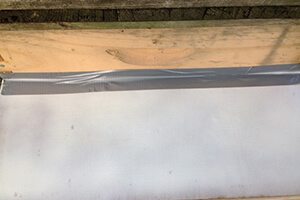
One thing that always induces a chuckle for me is when people say we need to rely on native pollinators. Folks seem so ready to point out that honey bees are not native to North America. Oranges are not native to North America. Apples, pears, peaches, most plums, apricots, almonds, and limes are all native to Eurasia (home of the honey bee). Cole crops: cabbage, broccoli, cauliflower, Chinese cabbage, all Eurasian. Cucurbits: watermelons (African), cucumbers some squashes are Eurasian. Onions, Soybeans, and numerous other fruits and vegetables were brought here from Eurasia. These plants rely on honey bees for pollination to set fruit or make seed.
Make no mistake, we are breeding and learning to propagate some native pollinators. That is good; we should not be relying on one species for pollination. Bumble bee culture is possible. Bumble bees pollinate tomatoes and peppers well, as both are native to the Americas. Bumble bee propagation is expensive. Blue Orchard bees are now available. They provide excellent help for honey bees in pollinating native fruit. However, we are a long way from having the infrastructure in place to replace honey bees for most pollination. It may not be economically feasible to develop the infrastructure for solitary bees as pollinators. Other bees are not portable and do not overwinter their colonies in cavities, tubes or nests. Solitary bees and most Bumble bees must start from overwintered queens or solitary females each season. Honey bee colonies solve a lot of problems.
Double-Queen Colonies
I have had a reader contact me regarding the double-queen colony. One question should have already been answered in this column. We talked about making half-size telescoping covers. These will be needed because the two conjoined hive bodies share a single stack of honey supers placed upon the center where the two boxes are joined. The queen excluder will cover half of each hive body. The supers placed upon the queen excluder will occupy half of those two hive bodies. On each side of the super a half inner cover is needed and a half telescoping cover over that. The logical question is what about rain. If the half covers just butt up against the super, will not water drip into the colonies? Yes it will.
There are several possible solutions to this dilemma. Obviously, kitchen or bath caulking would work, but that would need to be replaced after each hive opening. Beeswax could be used to close the gap. A bead of wax would last and hold well. It would be my suggestion to add a bit of vegetable oil to the wax and work it in. The oil would keep the wax from drying out and becoming difficult to work. The wax would need to be worked into the joint and adhered to the supers as they were changed in position and removed when filled. A hive tool will separate the wax from the super. This solution creates more work, but I like the natural material better than caulking. Also, the beeswax could be reused for an entire season. The caulking removed would need to be replaced with new material after every hive inspection, super manipulation or super removal. What is the least work and lowest expense solution?
Baling Wire and Duct Tape
Okay, I live on a farm and my neck gets sunburned; we cannot operate without two important materials out here in the wide-open spaces. One is baling wire. It has more uses than most folks could imagine. Those rolls of wire for imbedding in wax foundation for strength are another great tool with multiple uses. Think baling wire light. The second indispensable material is duct tape. I use duct tape between the half telescoping cover and the super. It goes on in …
Photo Caption
Duct tape between the 1/2 telescoping cover and the super to keep rain out.


